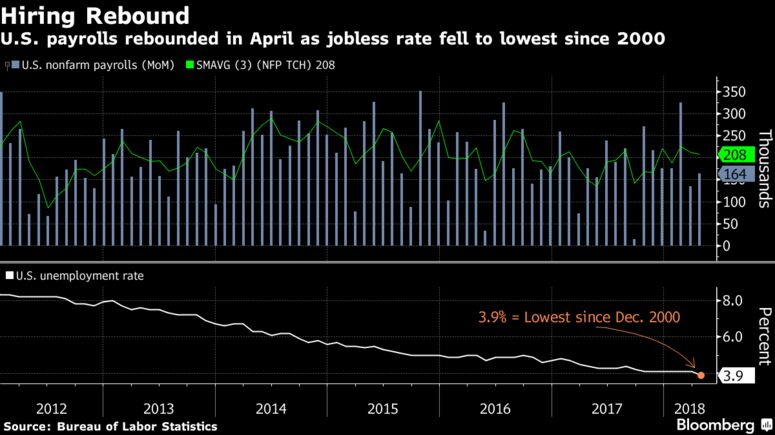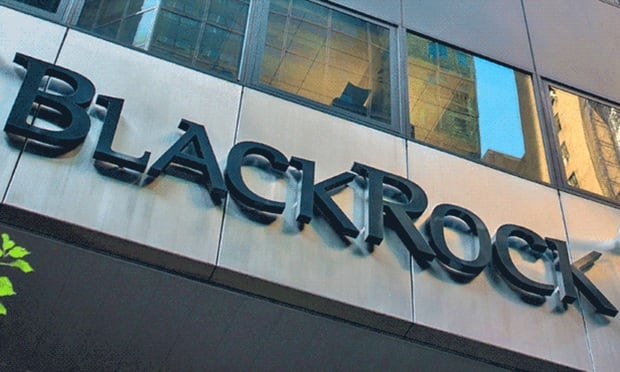 Companies in industries from services to manufacturing are hungry for workers, indicating hiring is likely to stay solid. (Photo: Shutterstock)
Companies in industries from services to manufacturing are hungry for workers, indicating hiring is likely to stay solid. (Photo: Shutterstock)
U.S. hiring rebounded in April and the unemployment rate dropped below 4 percent for the first time since 2000, while wage gains unexpectedly cooled, suggesting the labor market still has slack to absorb.
Payrolls rose 164,000 after an upwardly revised 135,000 advance, Labor Department figures showed Friday. The jobless rate fell to 3.9 percent, the lowest since December 2000, after six months at 4.1 percent. Average hourly earnings increased 0.1 percent from the prior month and 2.6 percent from a year earlier, both less than projected.
Recommended For You
Related: U.S. companies digging deeper to find and keep workers Despite the softer-than-expected wage reading, an unemployment rate drifting further below Federal Reserve officials' estimates of levels sustainable in the long run may in their view add to upward pressure on wages and inflation. That would keep the central bank on track to raise interest rates in June for the second time this year and potentially one or two more times after that in 2018.

"We believe the U.S. labor market remains on solid footing," Sam Bullard, senior economist at Wells Fargo Securities, said in a note before the report. "That said, as labor market conditions continue to tighten and the pool of skilled workers on the sidelines continue to shrink, future monthly hiring gains are likely to slow from the current hiring pace."
The median estimate of analysts was for a gain of 193,000 jobs, with projections ranging from 145,000 to 255,000. Revisions to prior reports added a total of 30,000 jobs to payrolls in the previous two months, according to the figures, resulting in a three-month average of 208,000.
Private employment
April's payroll gain reflected a 168,000 increase in private employment, compared with the median estimate for 190,000. Goods-producing jobs picked up to a 49,000 increase, with construction rebounding to a 17,000 gain after a decline that may have been impacted by weather in March. Manufacturing added 24,000, the seventh straight month at 20,000 or more.
Hiring at service providers was little changed at 119,000, with the biggest gains in professional and business services at 54,000, and education and health services at 31,000.
The decline in the jobless rate resulted from a drop in the number of unemployed people, while the number of employed Americans was little changed, according to the Labor Department's separate survey of households.
That pushed down the participation rate, or share of working-age people in the labor force, to 62.8 percent from 62.9 percent in the prior month. The employment-population ratio, another broad measure of labor-market health, fell to 60.3 percent from 60.4 percent.
The wage figures showed pay gains are having a tough time breaking out of their recent pace of modest increases. The monthly gain in average hourly earnings followed a downwardly revised 0.2 percent increase in March, and March's annual increase was also revised lower to 2.6 percent.
A separate measure, average hourly earnings for production and non-supervisory workers, also increased 2.6 percent from a year earlier, after a 2.6 percent gain. The average work week for all private employees was unchanged at 34.5 hours.
Other details
- The U-6, or underemployment rate, fell to 7.8 percent from 8 percent; the gauge includes part-time workers who'd prefer a full-time position and people who want a job but aren't actively looking
- People working part-time for economic reasons fell by 34,000 to 4.99 million
- Number of people out of work for 27 weeks or longer, or the so-called long-term unemployed, fell as a share of all jobless to 20 percent from 20.3 percent
© Touchpoint Markets, All Rights Reserved. Request academic re-use from www.copyright.com. All other uses, submit a request to [email protected]. For more inforrmation visit Asset & Logo Licensing.






